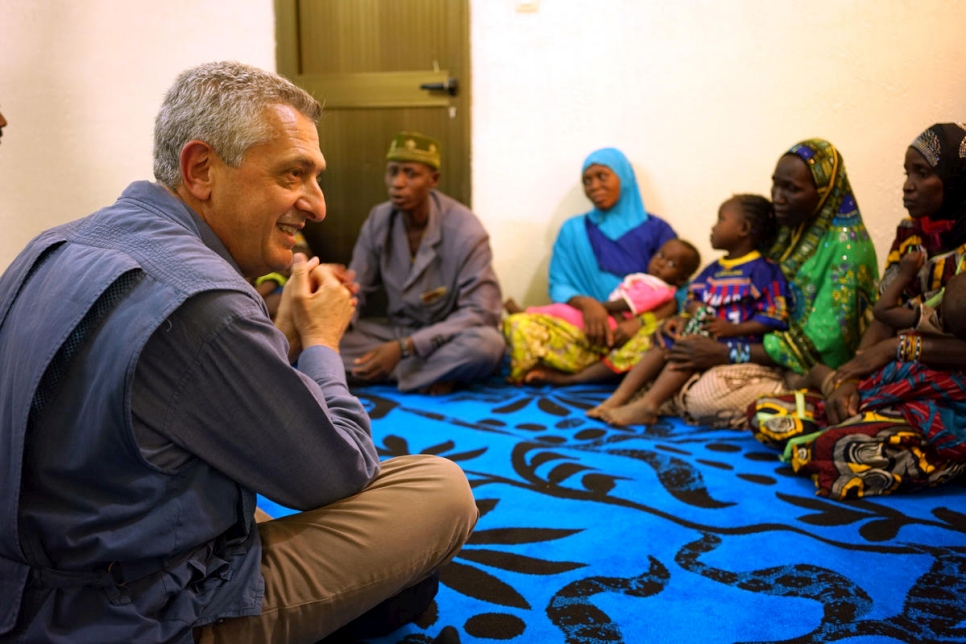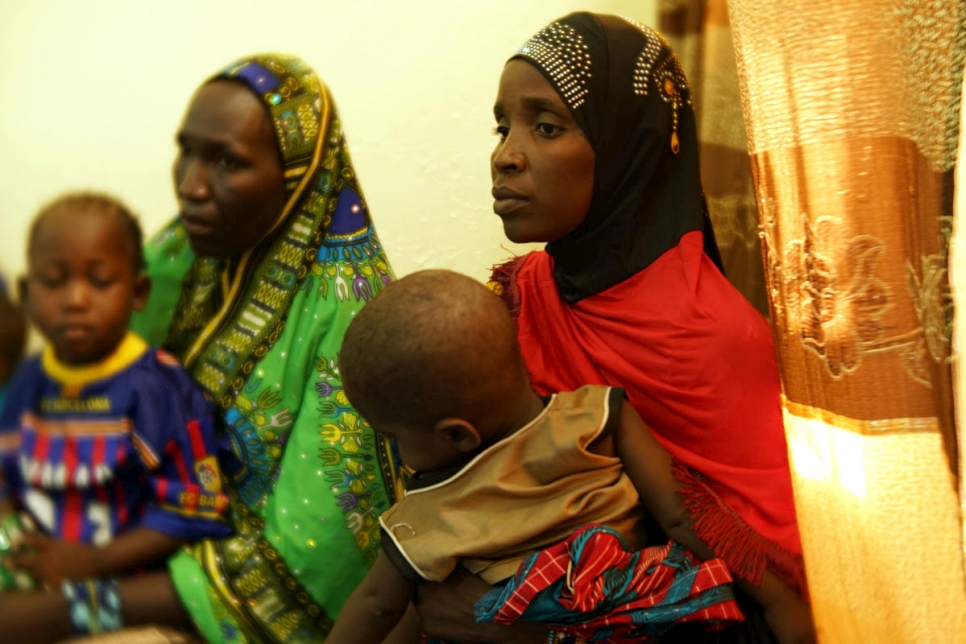Grandi calls on donor nations to help stabilize Africa's conflict zones
High Commissioner meets refugees from Burkina Faso and Niger in Mali during a brief trip to Africa marking World Refugee Day.

UN High Commissioner for Refugees Filippo Grandi visits refugees and returnees in the remote town of Gao in northern Mali. © UNHCR/Jehad Nga
GAO, Mali – The Malian desert town of Gao is a crossroads of travellers, migrants and refugees, but also of soldiers and rebels.
Among the refugees registered there by UNHCR, the UN Refugee Agency, are more than 5,000 who have arrived from neighbouring Burkina Faso in recent months. They came from border towns where the army has been fighting rebels.
“They said there were rebels in the town and they rounded up 50 people,” said Souaibou Moumouni, who arrived with his family. “They didn’t bother to check and just took 50 local people.”
Moumouni, his family and several dozen other people decided to seek refuge across the border in Mali. However, they found refuge itself was not without problems. They are housed in huts, and many, including Moumouni’s family, have received no food aid.
They told their story to UN High Commissioner for Refugees Filippo Grandi, who met them during a brief visit to Mali. He said he would make sure they received UNHCR assistance.
Grandi was on the last stop of a trip to mark World Refugee Day, June 20, which also took him to Libya and Niger. All are zones of conflict and he issued a call for care on the part of the various armies in the region as they battle to restore security.
“We had to walk at night because it was so hot for the children.”
Gao is home to an international base where soldiers from more than 20 countries make up a UN peacekeeping force working to stabilize the country.
The High Commissioner also met refugees who had recently arrived from Niger. They fled border towns to escape conflict between Islamist fighters and security forces. The fighters attacked the townspeople, saying they had given the security forces information about their movements.
More than 1,000 people fled.
“We had to walk at night because it was so hot for the children,” said Miriam Daouda, who arrived from Niger. They eventually found someone with a cart to carry them to Gao, she said.
There, they received food aid but are still haunted by the memory of the conflict.
“Since coming, I still haven’t been able to sleep well,” she said. “What we went through is still inside.”

Mariam Souleye has planted crops and supports her family by making couscous, semolina and noodles. © UNHCR/Jehad Nga
The number of refugees in Gao is smaller than the number of Malian refugees who fled to Niger in 2012 to escape fighting in Mali and have now returned.
Some, like Mariam Souleye, have planted crops and make couscous, semolina and noodles.
“Life is getting better, little by little,” she said. However, it is still difficult. Few residents have money to buy her products and she and her friends have no money for soap to clean up.
“Life is getting better, little by little.”
“The state helped us timidly, with a little money, when we came back,” Seydou Cissé said. He fled the fighting in 2012 and went to Niger. He returned in 2014 and helped set up the Association of Returnees and Displaced. He says more than 10,000 people have come back from Niger and Burkina Faso.
“But we need more help,” he said. “People came back and found their houses smashed. Basic services are lacking. There are returnees who have to go back to Niger to find food for their families.”
Those shouting about a “refugee emergency” in Europe or America should visit African communities giving refuge to millions with small resources. Energies would be better spent helping people address problems here while sharing some of the refugee burden born by poor countries. pic.twitter.com/jp8TFjD9Qp
— Filippo Grandi (@RefugeesChief) June 23, 2018
His call for help was echoed by Grandi with a plea to donor countries. He pointed out that many people seeking to reach Europe go through insecure areas in Mali and Niger on their way north.
“The communities here need stability,” he said. “Migrants and refugees need stability. But resources are very limited. The international agencies have far too little money. And the government alone can’t deal with the problems. The Europeans complain continually about refugees and migrants trying to reach their shores but it’s going to continue if there’s no real investment here.”
